10 Inclusion Essentials for Early Childhood Classrooms
1. Assess your classroom’s readiness for inclusion
As a thoughtful and informed early childhood educator, you’re probably eager to fully embrace inclusive teaching practices. But is your learning environment inclusion-ready? The transformative benefits of inclusion can only take root when the physical and social characteristics of your classroom are primed to support them. To determine your classroom’s inclusion readiness, ask yourself questions like:
- Is my classroom on one level? If not, are there ramps or other accommodations to make it physically accessible to all learners?
- Is there enough space between centers to allow wheelchairs and walkers to easily pass through?
- Does my classroom have a clear schedule posted where children can see it, and do I use verbal and visual prompts during transitions?
- Do activities and areas feature varied options for children with diverse needs?
For more guidance on assessing whether your classroom is all set for inclusion, check out this blog post and its companion post for downloadable forms featuring free readiness checklists.
2. Get staff and families on board
Inclusion doesn’t happen in a vacuum, and it’s not something that a single educator—no matter how dedicated—can pull off on their own. Collaboration is key, and some administrators, colleagues, and families may need to be convinced of the benefits of inclusion. The good news is that the facts are on your side: The inclusive tide lifts all boats
Here are a few ways you can win over reluctant families and staff members:
- Survey colleagues and caregivers to see what questions they have about inclusion. Then draft a Q&A to hand out or post on your program’s website.
- Start an Inclusion Corner in your program’s newsletter where you can post facts and research and respond to questions or concerns.
- Organize parent information nights on inclusive education.
- Invite parents to observe inclusive practices in action and then meet with staff and administration to discuss what they saw.
- Introduce parents from your program to parents from an existing inclusive program.
3. Focus on strengthening teamwork
Smooth collaboration is critical once you’re ready to start implementing inclusive practices program- or school-wide. Here are some quick tips that are relevant whether you’re just starting to build an inclusion team or looking to strengthen your existing team:
- Survey colleagues and caregivers to see what questions they have about inclusion. Then draft a Q&A to hand out or post on your program’s website.
- Keep it small(ish). Smaller teams equal more trust and efficient decision-making.
- Make a commitment. Everyone should understand that inclusion is a multi-year process that requires patience and positivity.
- Hold regular meetings. Plan on meeting for at least two hours once a month.
- Make decisions by consensus. Sticky wall brainstorming and pros and cons charts are both good ways to make group decisions.
For more essential teamwork tips, take a look at this infographic.
4. Provide a solid foundation for positive behavior
The fewer behavioral disruptions you have in your classroom, the easier it’ll be to create a learning space where every child feels safe, respected, and welcomed. The most proactive way to address challenging behavior is to establish clearly defined classroom rules, routines, and expectations. Some other things to keep in mind:
- Be predictable. Young children feel safer and more confident when they know what to expect. Establish a routine by sticking to a predictable schedule of activities.
- Model positivity. Adults in your classroom should aim for a 5-to-1 ratio of positive-to-negative comments when interacting with children.
- Provide a safe haven. Create a “chill out” space in your classroom where children can go when they’re feeling upset, angry, or emotionally overloaded.
Periodic self-assessment should also be part of your inclusion toolkit. If your program is one of the thousands that use the Pyramid Model for Promoting Social Emotional Competence in Infants and Young Children, then the Teaching Pyramid Observation Tool (TPOT). is the perfect way to gauge how faithfully you’re implementing Pyramid Model practices.
5. Use more visual supports
Children with disabilities—and many typically developing children, too—tend to process visual information more readily than auditory information. Unlike spoken words, pictures and symbols are consistent, predictable, and can be revisited as many times as needed.
Visual schedules are one option for showing young children what to expect, reinforcing classroom behavioral expectations, and easing transitions between activities. If you find that a student resists transitions to activities they don’t like, consider these additional strategies:
- Combine the visual schedule with verbal foreshadowing (“Just a reminder that we need to clean up and go inside in 5 minutes”).
- Reinforce the visual schedule with a special job to keep the child engaged during the transition (e.g. ringing a bell, carrying supplies).
- Create a behavior chart that rewards cooperative transitions (“If you walk quietly into the classroom and sit down, you can put a sticker on your chart”).
6. modify materials so everyone can participate
To maximize participation in ongoing classroom activities, it may be necessary to modify certain materials. Look for signs that a student is interested in but not able to fully engage with an activity (e.g., they give up easily or quickly become frustrated), and then think of easy ways you can make materials more accessible so the child can participate as independently as possible. Examples include:
- Gluing small pieces of Styrofoam to the pages of a book to make them easier to turn.
- Stabilizing drawing paper and other materials using tape, Velcro, and nonskid backing
- Taping wooden blocks to the pedals of a tricycle so a child’s feet can reach.
- Wrapping foam around brushes and markers so they’re easier to hold.
- Lowering easels or using a tabletop version to assist children who have difficulty standing.
Read this blog post for more expert guidance on modifying materials and teaching strategies for young children with physical and sensory impairment.
7. Simplify the activities
When in doubt, simplify! Reducing the steps in a multi-part task or breaking down an activity into simpler, more manageable chunks is one of the best strategies for boosting child engagement and comprehension. Here are a few examples:
- If a child feels overwhelmed by multi-step activities like cooking or craft projects, break the activity down into parts, using pictures of each step to make them clear. Also consider giving some children activities that have been partially completed and have them do only a few of the steps.
- If a child plays repetitively in one corner of the kitchen play area, take photos of three- or four-step play scenarios (e.g., put pot on stove, stir, carry it to the table) and use them to help the child extend their play.
- If a child has difficulty with manipulative toys that have a lot of pieces, like puzzles or beads, try giving the pieces to the child one at a time, gradually increasing the number of pieces.
8. Follow your students' lead
Scaffolding instructional opportunities on top of a child’s existing interests is a great, intuitive way to promote an environment where students of every ability level feel comfortable, supported, and ready to learn. This is especially important for students who have more severe disabilities or struggle to communicate. Pay attention to a child’s favored activities and routines, and then look for an opportunity to join in and initiate a chain of communicative turn-taking.
For instance, if a child with communication challenges is fixated on shoveling sand, you or another adult could play quietly alongside her. After a while, slowly introduce other objects (like a pail or second shovel), label those objects and your actions with single words (“Shovel” “Dig!”), and eventually encourage her to increase her communication skills by asking for these things by name.
9. Build positive peer relationships
Positive experiences breed positive attitudes, so be on the lookout for opportunities to cultivate mutually beneficial interactions between students with disabilities and their typically developing peers. Select toys that naturally lead to cooperative play, like blocks and kitchen or house playsets. Make note of which children are drawn to particular toys and activities, and arrange small playgroups accordingly. To further inspire strong peer bonds, try pairing a child who is competent in a certain activity with a less confident child. For example, if Zoe has trouble putting paint on sponges during a paint activity, have another child at her table apply the paint for her.
See more proven strategies for supporting early childhood friendships and social play in this blog post.
10. Strengthen connections with families
Families have unique “insider knowledge” that inclusive educators should regularly tap into—and parents will also benefit from your perspective as you share strategies for supporting developmental growth at home. Use these tips to keep the lines of communication between classroom and home thriving:
- Communicate regularly. If you haven’t already, start a classroom newsletter that you can slip into backpacks and email to parents and caregivers. Keep families updated with periodic phone calls that emphasize a child’s progress or funny anecdotes from the classroom.
- Encourage volunteering. Urge parents, grandparents, and caregivers to visit or volunteer in the classroom. Families will be better able to adapt classroom activities for home learning if they see them in action first.
- Talk less, listen more. Teachers typically do a lot more talking than family members in face-to-face meetings, so invite parents or caregivers to talk more during your next conference or chat. You’ll likely glean some useful information that you can use to further connect with their child.
- Provide information. Think of your program or classroom as a resource center where families can access valuable information about community service providers and referral information for child care, assistance programs, and more. Gather literature from community resource centers and display it on a small bookshelf in a visible part of your classroom.

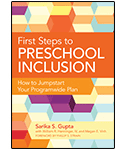 Suggestions 1 and 2 adapted from
Suggestions 1 and 2 adapted from 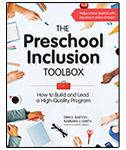 Suggestion 3 adapted from
Suggestion 3 adapted from 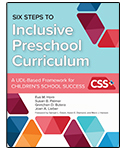
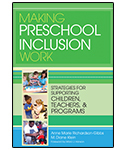 Suggestions 5, 6, and 9 adapted from
Suggestions 5, 6, and 9 adapted from 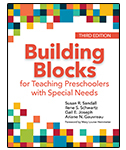 Suggestions 5, 7, and 8 adapted from
Suggestions 5, 7, and 8 adapted from 